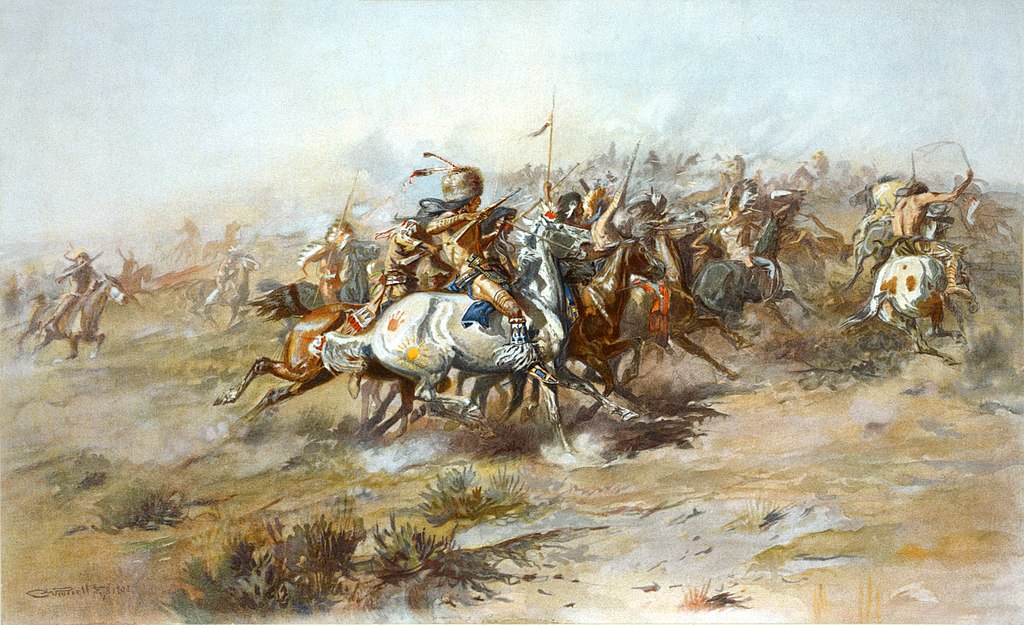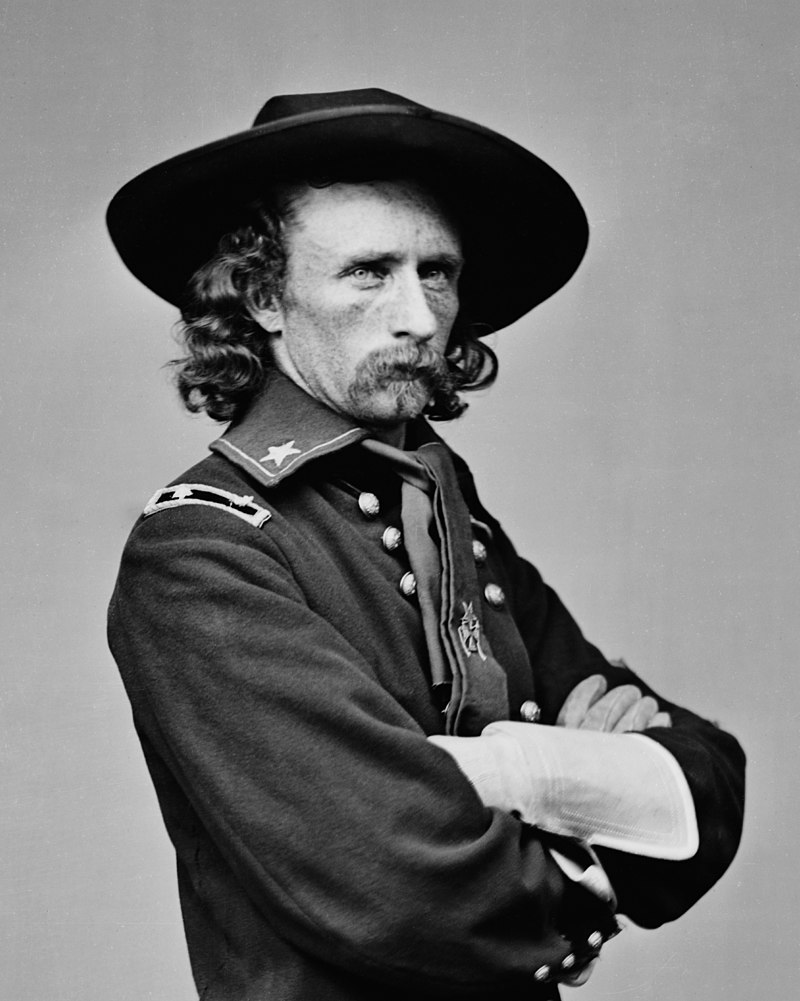Battle of Little Bighorn
The Battle of the Little Bighorn was a short-held victory for the Native Americans against the U.S. Army. It was the army’s worse defeat of the Plains Indian Wars.
The Treaty of Fort Laramie
The scene was set for the Battle of Little Bighorn just some years before in 1868. The American government wrote a treaty called the Treaty of Fort Laramie.
It was an attempt to stop Native Americans fighting back with the settlers who were taking their land. It marked out an area that the Native American Lakota and Cheyenne had to live on.
This was to control them more and force them to adopt Christianity.
Custer’s Expedition
There were rumours that there was gold in the land given to the Native Americans. The Americans broke their treaty and sent miners into the land to dig for Gold.
The Lakota and Cheyenne had always hunted for bison on the lands of Nebraska and Montana. They decided that, because the Treaty did not apply to the settlers, it no longer applied to them either.
So, the Lakota and Cheyenne hunted once more for bison on these lands. The bison were extremely important to Native American life on the plains.
The American government gave a 30-day warning to Native Americans to get off this land and stop hunting bison.
A three-pronged attack
The U.S. Army launched an attack in three parts. First, soldiers marched east from Fort Ellis (Montana) under Colonel John Gibbon.
The second prong went west from present-day North Dakota under Alfred Terry and General Custer. The third was led by General George Crook and went north.
The plan was for them all to meet at Little Bighorn.
This plan went astray when Crook was met by Native Americans near Rosebud Creek, and Crook’s Army was defeated.
General Custer marched on ahead and decided to attack Little Bighorn. He had 600 men and thought, at most, he would be met with 800 Native American fighters.
He was wrong, there were 5,000-8,000 Native Americans, including 2,000 warriors.
Custer’s defeat angers Americans
This humiliating defeat made Americans really angry and the Sioux were forced back onto the reservation by 1877.
The Black Hills were also taken back by the United States which was a direct violation of the Treaty.
This victory was only a short-lived one because the Sioux and Cheyenne suffered greatly in years to come.
Some think that the Massacre of the Wounded Knee was just payback for Custer’s embarrassment.
Quiz – Test Your Knowledge!
What was the Treaty in 1868 called?
What were the settlers looking for on Native American land?
What did the Cheyenne and the Lakota hunt for?
Who led the second group in the attack?










